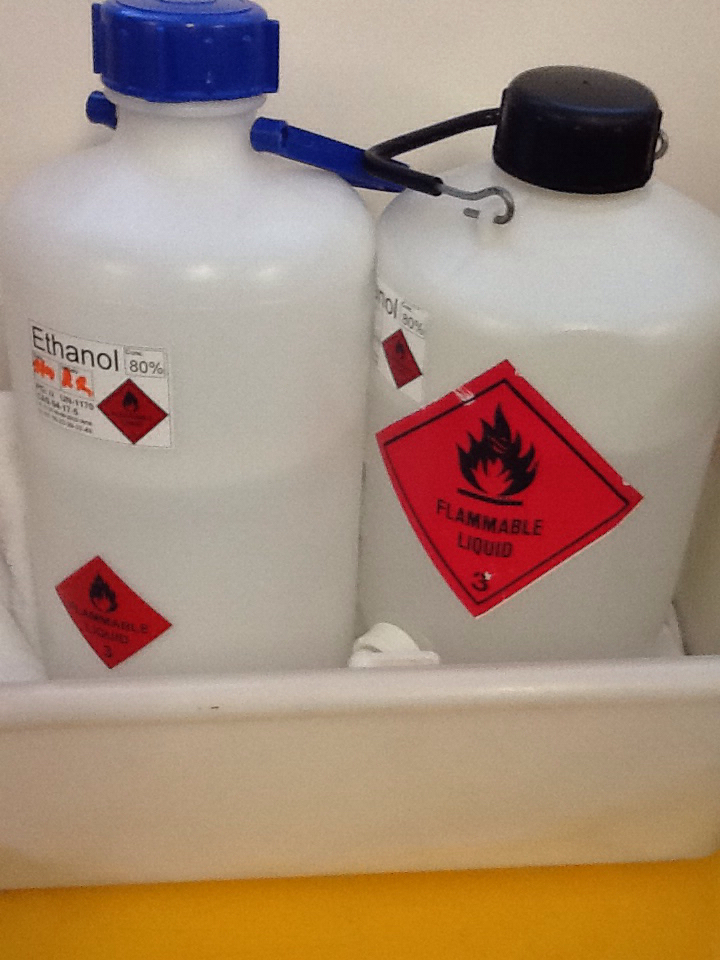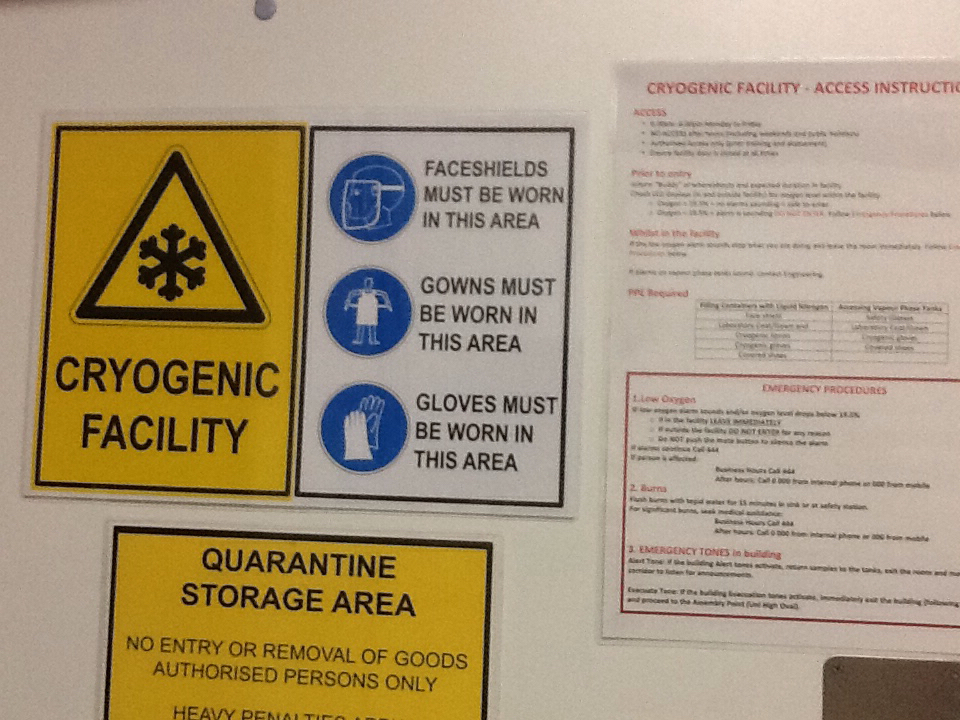Title Page
-
Document No.
-
Audit Title
-
Laboratory/Department
-
Conducted on
-
Prepared by
-
Location
-
Personnel
Section 1. General Laboratory
-
Is there an up-to-date chemical inventory list?<br>Has it been updated in the last 6 months?
-
Are DG segregation charts present?
-
Are there glove chemical resistance guides present?
-
Are WHS compliant SDSs of all dangerous goods and hazardous substances in the laboratory available?
-
Are risk assessments for procedures involving dangerous goods and hazardous substances completed and available?
-
Are spill kits present and fully stocked?<br>-Mop & mop head<br>-Kitty Litter<br>-Dustpan and broom<br>-Chemical Waste Bag<br>-Safety Gloves
Section 2. Laboratory Benches
-
Are chemicals not in use stored in appropriate cupboards?
-
Are working solutions kept to a minimum?
-
Are chemicals stored in appropriate containers (ADG approved, good working conditions)?
-
Do working solutions have compliant labels, including DG class stickers where applicable?
-
Is there adequate segregation of DGs?
-
Is there any DG stored above 1.5m?
Section 3. Fume Cupboards
-
Are fume cupboards in good working order?
-
Are fume cupboards free of non- essential material (face of cupboard free from obstacles)
-
Contains no more than 2.5 L of flammable liquids?
-
Are chemicals not in use stored in appropriate cupboards?
-
Do chemicals not for immediate use have compliant labels, including DG class stickers where applicable?
Section 4. Chemical Storage( outside of DG cabinets)
-
Are drip trays present?
-
Is there adequate DG storage?
-
Are chemicals stored in appropriate containers (suitable, good condition, free from external packaging)?
-
Do chemicals have appropriate and legible labels, including DG class stickers?
Section 5. Fridges/Freezers /Cold Room
-
Do they contain any DG?
-
If so, are they free from DG class 3 packing group I or large quantities of packing group II and III?
-
If DG Class 3 is found in fridges/freezers are the units certified intrinsically safe by engineering?
-
Is there adequate DG segregation?
-
Are chemicals stored in appropriate containers (ADG approved, good working conditions)?
-
Do chemicals have appropriate and legible stickers, including DG class stickers?
-
Does the area have adequate storage?
-
Is the area free of non-essential material?
Section 6. DG Storage Outside of Cabinets (as per 2243.10)
Section 6.1 Flammable Liquids-Class 3
-
Is the total < 10 L per 50 m2?
-
Max pack size < 5 L
Section 6.2 Oxiding Agents-Class 5
-
Is there < 10 Kg or 10 L per 50m2
-
Max pack size < 10 Kg or 10 L
Section 6.3 Toxic Substances-Class 6
-
Is the total for PG I < 10 L or 10 Kg<br>For PG II and/or III< 50 L or 50 Kg
-
Max pack size PG I <10 L or 10 Kg<br>For PG II or PG III < 20 L or 20 Kg
Section 6.4 Corrosive Substances-Class 8
-
Is the total <20 L or 50 Kg per 50m2
-
Max pack size < 20 L or 20 Kg
Section 6.5 Miscellaneous Dangerous Goods-Class 9
-
Is the total < 50 L or 100 Kg per 50m2
-
Max pack size <5 L or 20 Kg
Section 6.6 TOTAL of All DG
-
Is there a total < 200 L or 200 Kg per 50 m2
Section 6.7 Hazardous Substances
-
Max pack size < 5 L or <20 Kg
Section 7 DG Safety Cabinets
-
Do all DG safety cabinets in the area function correctly?
-
Are all chemicals stored in safety cabinets contain compatible?
-
Does the area have adequate storage?
-
Is the sump free of chemicals?
-
Are chemicals stored in appropriate containers (suitable, good condition, free from external packaging)?
-
Do chemicals have appropriate and legible labels, including DG stickers?
Section 8. High Risk Chemicals
-
Are there any high risk chemicals present eg. Class 5 ( oxidising agents and organic peroxides), Class 4 (flammable solid, spontaneously combustible, dangerous when wet), Hydrofluoric acid, Phosgene
-
Are they being adequately maintained?
Section 9. Scheduled Drugs and Poisons
-
List the number and location of locked boxes belonging to the laboratory( eg. room temperature, fridge, freezer, cold room)
-
Is the box locked and secured?
-
Does the box have adequate storage?
-
Does the manifest contain all scheduled drugs and poisons in the laboratories inventory?
-
Is the manifest in use and up-to-date?
Section 10. Compressed Gas Cylinders
-
Are the gas stored appropriate?
-
Are the cylinders clearly labelled on their shoulder?
-
Are the cylinders secured and fixed to a wall or trolley?
-
Is the regulator appropriate (type and grade)?
Section 11. Chemical Waste
-
Is waste storage kept to a minimum?
-
Is waste stored in appropriate containers (ADG approved, good working conditions)?
-
Do waste containers have compliant labels including DG class stickers?
-
Is there adequate segregation of DG stored in the waste area?
Section 12. Other Comments
-
1.
-
Add media
-
2.
-
Add media
-
3.
-
Add media
-
4.
-
Add media
Section 13. Sign Off
-
Laboratory Representative
-
Safety Auditor
-
Second Auditor
-
Review Date:







